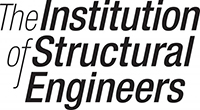| Organisation: | IStructE |
|---|---|
| Date: | 30/01/20 |
| Time: | 5.45pm for 6.15pm start |
| Speaker: | Dr David M Lilley Eur Ing CEng FIStructE FICE FIMechE FIEAust CPEng |
| Venue: | Crowne Plaza Hotel, Stephenson Quarter, Forth Street,Newcastle upon Tyne NE1 3PF |
| Cost: | Free |
| Type: | Presentation and Discussion |
| Contact: | Chandra Vemury (vemuryconsultancy@gmail.com) |
| Region: | Newcastle-Upon-Tyne |
| Time of Day: | Evening |
| Topic: | Design |
This talk will provide an overview of guidance and requirements of recent standards for fire protection of basic concrete and steel elements in the UK and, for comparison, in Australia. The session will conclude with a discussion amongst participants relating to issues of fire resistance of external cladding on high-rise buildings.
About the Speaker: David was Professor of Structural Engineering at Charles Darwin University, Northern Territory, from August 2009 until December 2018. During this time he was also a Specialist Consultant to NT Government Department of Infrastructure, Planning and Logistics. Prior to moving to Australia, he was Senior Lecturer in Structural Engineering at the University of Newcastle (UK) for more than 27 years. He was a member of the IStructE Australia Regional Group committee 2010-18, and a member of the Institution of Engineers Australia Structural College Board 2012-15. David is currently working as a Consultant for Clancy Consulting Ltd.



